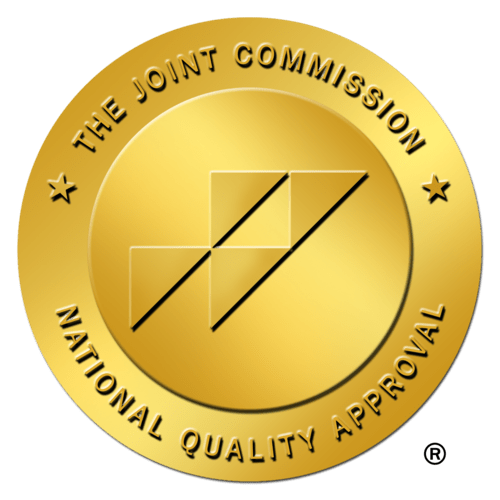
In spite of (or because of) the widespread disruption caused by COVID-19, healthcare providers have innovated in many aspects of their business. Human resources and staffing are no exception.
In addition to adopting new technology to improve efficiency, staffing and HR managers have adopted new approaches that allow them to staff up more quickly and realize significant cost savings. Many of these changes will stick through 2021 and beyond.
“Healthcare organizations have learned how to better manage patients with COVID-19, and there is increasing optimism because of the vaccines,” says Aamer Mumtaz, CareRev’s vice president of growth and strategy. “One of the key areas of innovation accelerated by COVID-19 relates to labor transformation.”
Here are a few ways healthcare providers are innovating during crisis:
Cross-training staff

COVID-19 pushed healthcare organizations to make the most of their existing resources. Healthcare organizations across the United States have launched ambitious efforts to train clinicians to take on new roles. Cleveland Clinic, for example, cross-trained more than 4,100 ambulatory and perioperative nurses to provide med-surg and critical care.
“We had always believed nurses in certain specialties needed to stay in that specialty,” says Eric Humphrey, Chief Human Resources Officer at Froedtert Health, a regional healthcare network in the Milwaukee, Wisconsin area. “With COVID-19, we re-examined all that. We cross-trained hundreds of individuals so we could be more nimble to meet the needs of our patients.”
Broadening resource pools

In addition to cross-training existing staff, healthcare organizations started thinking outside the box when it came to hiring and contracting with healthcare professionals. With many executive, management, administrative, and even clinical professionals working from home, healthcare organizations could (and did) recruit qualified candidates from anywhere.
CareRev helped Froedtert Health broaden its resources. As the only healthcare organization in the area using the technology (for now), its name stood out to CareRev healthcare professionals.
“Using CareRev allowed us to gain a competitive advantage,” says Humphrey. “We were able to use clinicians employed by our competitors who wanted to pick up additional shifts. This helped augment our staff with quality professionals. Normally to fill in gaps we’d start about a month in advance. With CareRev, we can post immediate needs and onboard quickly.”
Embracing new technology

The pandemic accelerated adoption of a range of technology, workforce solutions included. Healthcare systems moved onboarding and hiring from in-person to virtual, shifted outdated server-based solutions to the cloud, and improved efficiency with mobile technology, chatbots, and robots. A few tools that made significant strides in 2020 include:
Chatbots
Both chatbots and robots can decrease load placed on humans. According to a study published in Journal of the American Medical Informatics Association, patients viewed chatbots as favorably as humans, provided the bots deliver the same perceived quality. Froedtert Health started using chatbots recently to speed the hiring process—an initiative that will continue in 2021.
SaaS (Software as a Service)
The convenience, speed, and interoperability gains offered by SaaS solutions have prompted healthcare organizations to gradually move more workloads to the cloud. On the operational side, SaaS solutions have transformed healthcare revenue cycle and workforce management.
Compared to “legacy” solutions, SaaS platforms provide more accurate labor data, helping healthcare organizations realize controlled labor costs and increased efficiency. Cloud-based solutions also allow healthcare organizations to easily implement tools to improve employee engagement and to launch centralized staffing initiatives. And in times of emergency (like a pandemic) operating in the cloud allows organizations to quickly respond to change.
SaaS staffing solutions range from re-imagined platforms from established organizations as well as disruptive staffing technology like CareRev. “CareRev allows professionals to pick up shifts at the last minute using an app on their phone,” says Mumtaz. “And it’s easy for healthcare organizations to implement. Integrating a traditional server-based offering is a major event. When you integrate cloud-based technology, change happens much faster.”
Mobile solutions
Millennials, a generation who started using mobile technology as teenagers, value the ability to work from anywhere. Because they and younger generations comprise a large portion of the workforce, mobile-first technology is an important part of employee-first initiatives.
With the right mobile apps, healthcare organizations can give their employees and per-diem workers the flexibility to manage their own schedules. Why waste time with paper request forms and phone tag to fill last-minute shifts? Take it mobile to get it done pronto and boost engagement.
“We’re trying to take everything we do in HR mobile,” says Humphrey. “We have a lot of mobile-enabled resiliency-type solutions to help employees manage the stress of work. We use CareRev to fill shifts right away. We also implemented just-in-time learning for our clinicians. They can use their mobile device to access the education they need.”
Artificial intelligence
AI is just beginning to make an entry into the healthcare sector, but it has far-reaching potential. Because of its ability to access vast amounts of information quickly, clinicians can use it to advance population health initiatives and to help radiologists do their jobs faster.
Optimizing their existing staff

Healthcare organizations experienced a hard revenue hit when state officials recommended facilities cancel or postpone elective surgeries. The sharp ups and downs that followed accelerated adoption of more flexible staffing models.
“Many hospitals had been trying to staff to 90 percent capacity instead of 60 percent capacity,” says Mumtaz. “The pandemic required them to be more innovative with staffing.”
The flexible staffing model to emerge from COVID-19 involved staffing to a lower capacity and augmenting with per-diem professionals. A solution like CareRev, which allows staffing managers to fill shifts within hours or days, helps close the gap.
Froedtert Health uses a combination of employees, temporary staff, and CareRev professionals to ensure quality patient care. Humphrey says the organization adjusted its model during the pandemic and plans to stick with its current, more flexible arrangement moving forward.
“In the old days we used as little agency as possible,” says Humphrey. “With COVID-19, we realized we needed to think about staffing more holistically. We brought in an additional agency to complement the one we’ve been working with. We also brought in CareRev, which saved us at the beginning of COVID-19. These changes allowed us to stay open and remain financially sound throughout the pandemic.”
If any good has come from the pandemic, it’s the acceleration of time- and money-saving initiatives such as working remotely, mobile technology, and re-imagining the workforce. Most of these initiatives will play an integral role in a more efficient, value-based healthcare sector for the foreseeable future.
“We’re not going back to our old ways,” says Humphrey. “We benefit from looking at staffing holistically, and we’ll continue to cross-train our employees and use consultants and contracted professionals as necessary to complement their skills and to best serve our communities.”





